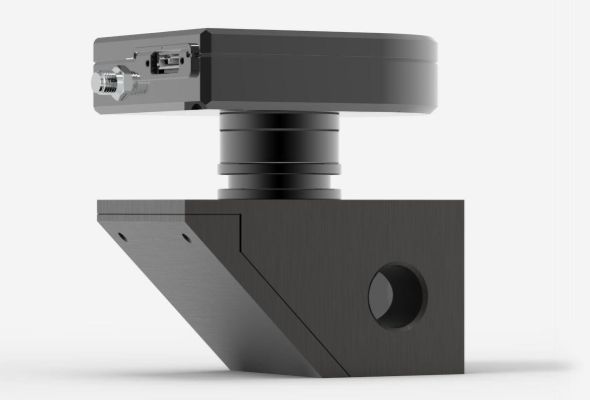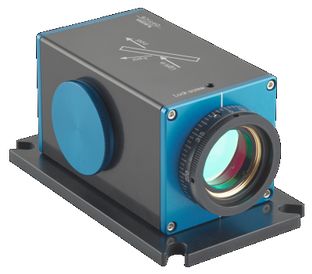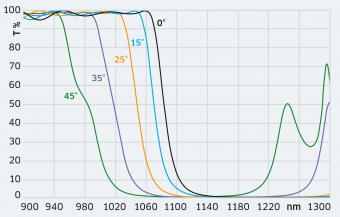optical density (original) (raw)
Acronym: OD
Definition: a logarithmic measure of the power attenuation, or the refractive index
Alternative term: absorbance
- optical properties of devices
- absorbance
- astigmatism
- cardinal points
- group delay
- group delay dispersion
- insertion loss
- optical thickness
- optical aberrations
- optical density
- reflectance
- retardance
- return loss
- transmittance
- (more topics)
Related: absorbancedecibeloptical attenuatorsneutral density filtersrefractive indexoptical thickness
Page views in 12 months: 1731
DOI: 10.61835/6zs Cite the article: BibTex BibLaTex plain textHTML Link to this page! LinkedIn
Content quality and neutrality are maintained according to our editorial policy.
📦 For purchasing optical attenuators, use the RP Photonics Buyer's Guide — an expert-curated directory for finding all relevant suppliers, which also offers advanced purchasing assistance.
Contents
The term optical density is used with two different meanings:
Optical Density as the Degree of Attenuation
Optical density may mean the absolute value of the logarithm with base 10 of the power transmission factor of an optical attenuator (e.g. as used for a laser safety glass): \textrm{OD} = \lg \frac{P_\textrm{in}}{P_\textrm{out}}$$
For example, an optical density of 3 means that the optical power is attenuated by the factor 103 = 1000. That would correspond to an attenuation by 30 decibels.
If several attenuators are used in series, their optical densities can simply be added. That is the key advantage of using such a logarithmic quantity.
To avoid ambiguity, it is better to use the term absorbance, as far as absorption is the attenuation mechanism used. However, attenuation may also be achieved with reflection or scattering.
Optical densities depend on the optical wavelength, although that dependence may be weak, e.g. in neutral density filters.
Optical Density and Refractive Index
A transparent medium is sometimes said to have a high optical density (or to be relatively dense) if it has a high refractive index. For example, one may say that total internal reflection is possible only if the beam comes from the optically more dense medium. That use of the term has nothing to do with attenuation.
Frequently Asked Questions
This FAQ section was generated with AI based on the article content and has been reviewed by the article’s author (RP).
What is optical density in the context of light attenuation?
Optical density (OD) quantifies light attenuation. It is the base-10 logarithm of the ratio of input power to output power (($\textrm{OD} = \lg(P_\textrm{in} / P_\textrm{out})$). For example, an OD of 3 means the power is reduced by a factor of 1000.
Why is optical density a useful quantity for filters?
When multiple attenuators or filters are used in series, their individual optical densities simply add up to give the total optical density, which simplifies calculations.
What is the other meaning of optical density?
The term optical density is also used to describe a transparent medium with a high refractive index. For instance, total internal reflection occurs when light travels from an optically denser medium to a less dense one. This usage is unrelated to light attenuation.
Suppliers
Sponsored content: The RP Photonics Buyer's Guide contains 76 suppliers for optical attenuators. Among them:
⚙ hardware
Gentec Electro-Optics offers optical attenuators for measurements on high-power laser beams.
⚙ hardware
EKSMA Optics offers variable attenuators for linearly polarized laser beams with high performance optics. They are available for Nd host laser applications in the 1040–1070 nm range and for femtosecond applications with broadband Ti:sapphire and Yb:KGW/KYW laser pulses. Manual and motorized versions available, highly customizable and designed for use in laboratory settings. Compact motorized laser power attenuators provide stable and reliable performance even in high power lasers for industrial applications.
⚙ hardware
We design and manufacture custom attenuator coating across a range of 300 nm — 6000 nm for a variety of applications. The main uses of attenuators are protecting sensitive detectors from overload, attaining accurate laser power measurements and being used in filter wheels to balance the system for particularly strong signals.
⚙ hardware
Optogama designs and manufactures motorized laser power attenuators (LPA) for precise, programmable control of laser beam intensity. Covering a broad spectral range from 250 nm to 2000 nm, these devices are compatible with UV, visible, and near-infrared sources.
Each LPA features a large clear aperture, making it ideal for high-energy or large-diameter beam applications. Built with high LIDT optics and robust mechanics, they ensure stable, long-term performance even in demanding industrial environments.
Custom configurations and integration support are available upon request.
⚙ hardware
LASEROPTIK can provide coatings for variable optical attenuators. One can change the transmission by tilting an edge filter, with highest transmission at normal incidence and typical operation for angles of incidence between 0° and 45°.
Questions and Comments from Users
Here you can submit questions and comments. As far as they get accepted by the author, they will appear above this paragraph together with the author’s answer. The author will decide on acceptance based on certain criteria. Essentially, the issue must be of sufficiently broad interest.
Please do not enter personal data here. (See also our privacy declaration.) If you wish to receive personal feedback or consultancy from the author, please contact him, e.g. via e-mail.
By submitting the information, you give your consent to the potential publication of your inputs on our website according to our rules. (If you later retract your consent, we will delete those inputs.) As your inputs are first reviewed by the author, they may be published with some delay.
 general optics
general optics







